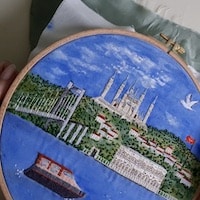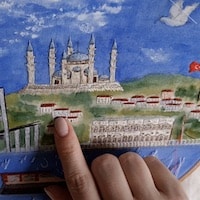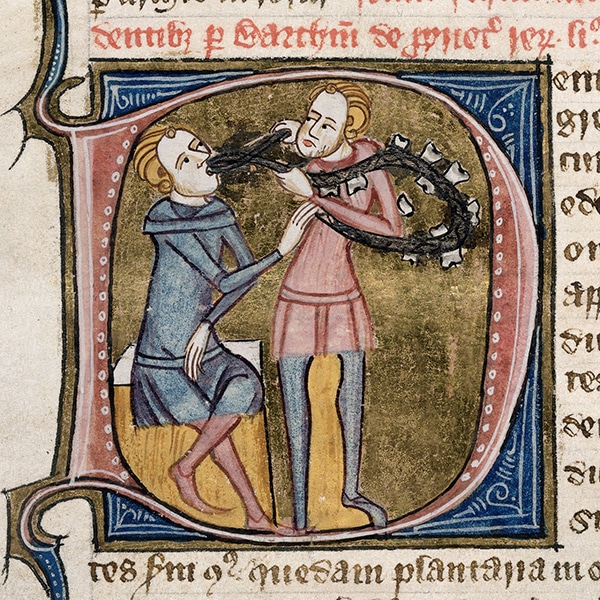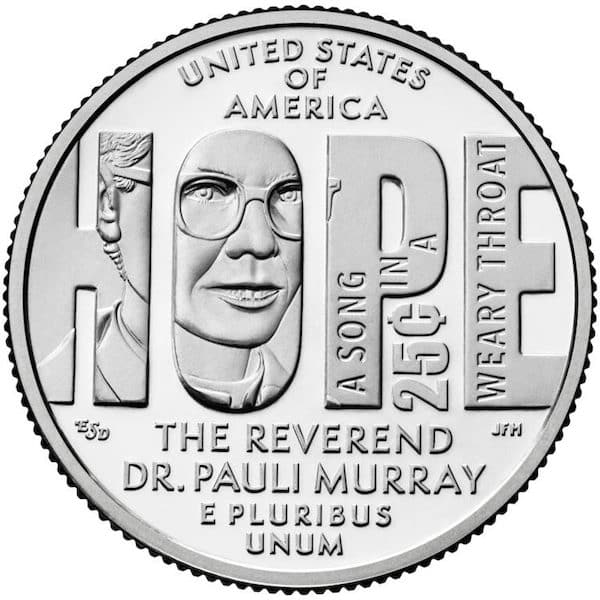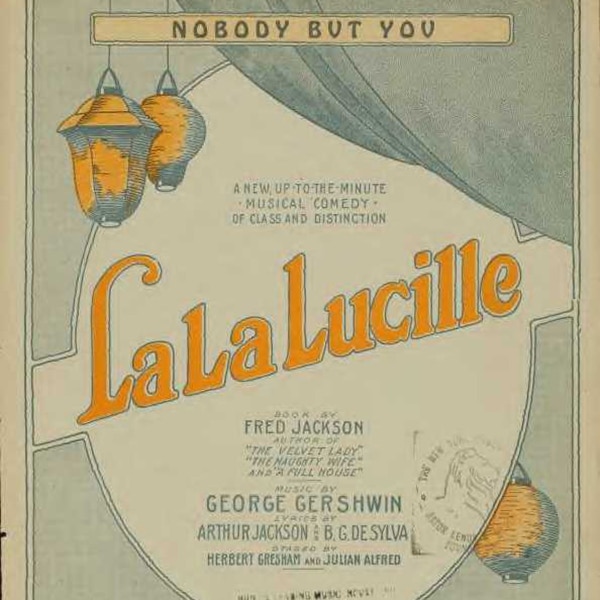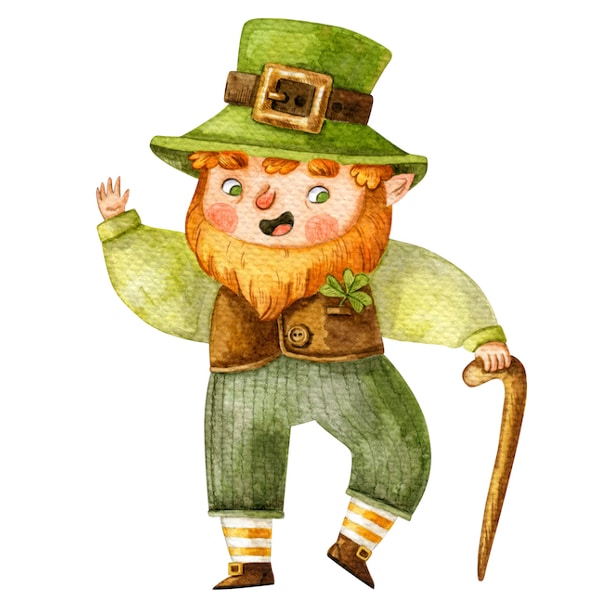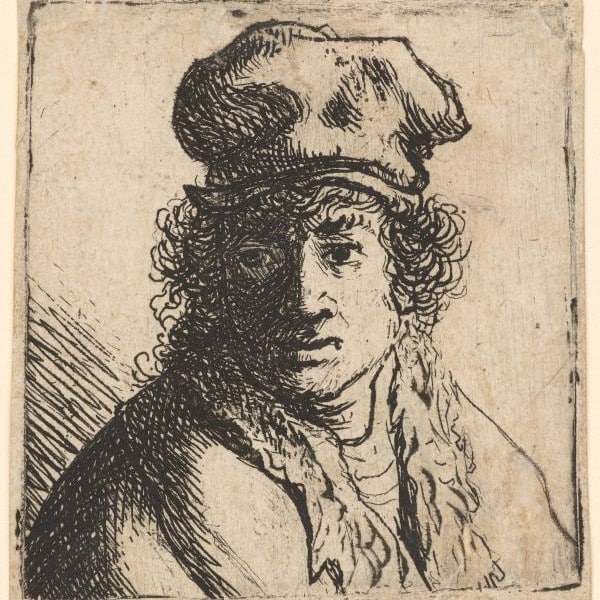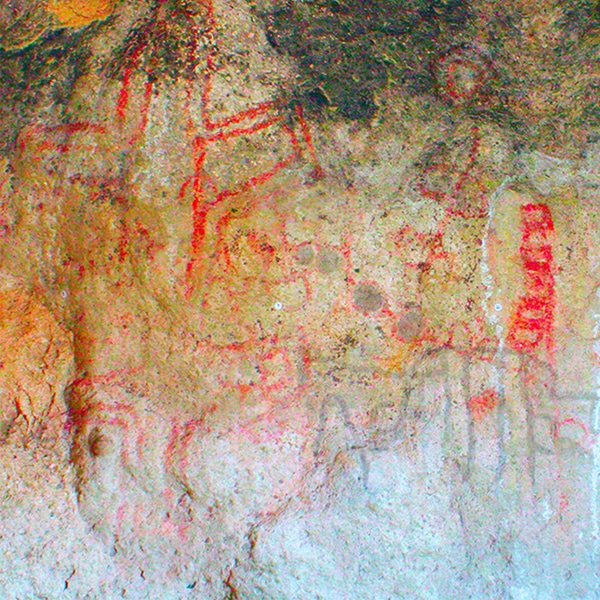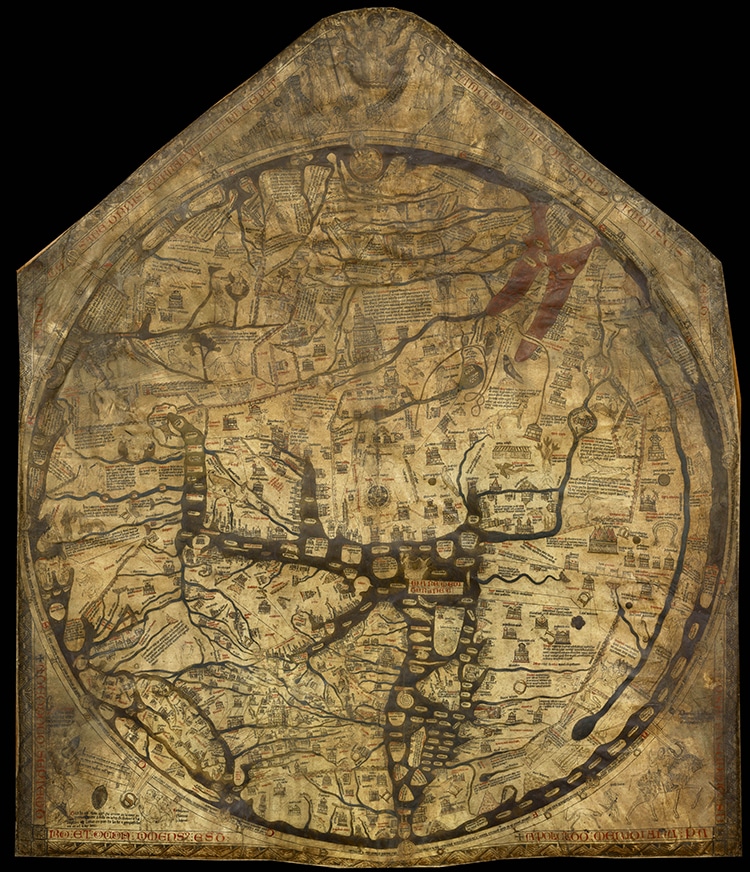
The Hereford Mappa Mundi, circa 1300. (Photo: Wikimedia Commons, Public domain)
Welcome to the Hereford Mappa Mundi, or as one might call it: a view of the world from an Englishman in 1300. Complete with Biblical motifs, mystical creatures, and some true geography, the ancient map depicts a unique worldview. It is preserved at Hereford Cathedral in Hereford, England. Visitors can peer closely at the 64″ x 52″ map to search for their favorite locations. Now, online viewers can get this up-close-and-personal experience as well. The Mappa Mundi has been made available as a high-resolution digital map to explore; simply click on a location to be transported to the past.
Mappae mundi are a genre of medieval world maps. About 1,100 are estimated to have survived, mostly within medieval manuscripts. Others like the Hereford example are large, free sheets of purpose. The Hereford Mappa Munde is the largest extant map from the Middle Ages—a larger German example, the Ebstorf Map, was lost in bombings during World War II. The map is drawn in ink on vellum in the style of the medieval “T-O” cartographic vision. This schematic divides the world into three quadrants within a circle to represent Asia, Europe, and Africa. The Americas would not appear on European maps until the 14th century Vinland Map and the Juan de la Cosa map (1500).
Within the Hereford map, Jerusalem takes center stage. The map is far from an accurate cartographic record, but it depicts the medieval Christian European worldview. Paris and Rome are two of the most detailed cities within the European “continent.” In total, the map depicts 420 cities and towns, some like Hereford itself quite minuscule among the other figures. Asia sits “above” the T: medieval Christians believe Christ's second coming would occur here. Biblical storylines play out across the map. Exodus, the Garden of Eden, and the Tower of Babel are all depicted with antisemitic characterizations of figures like Moses. This is unsurprising, as the map was created around 1300 in England, a country that expelled its medieval Jewish population in 1290.
Mythical people and creatures also populate the Mappa Mundi world. A “Blemmye,” a headless creature with a face on its chest, holds a spear and shield in Africa. Sciapods and Troglodites lurk across the map. Unicorns also appear alongside real creatures such as lynxes, the latter of which “sees through walls and urinates a black stone” according to the map's text. Viewers can also peer into the mythical Labyrinth or search for the Golden Fleece. The map's incredible detail offers endless possibilities. The new online portal even allows viewers to “3D view” the perforations, ink, and gilding that give the map subtle texture.
While much of the map's creation is still shrouded in mystery, it has remained at Hereford Cathedral for hundreds of years. The public was allowed to view the map at selected times. Otherwise, it was screened by wooden doors. It has been hidden several times for its own protection, including most recently during the bombing of England in World War II. Visitors can still make the pilgrimage to Hereford today to see the map, much as others have done for centuries. Among other treasures, the cathedral holds an ancient “chain library” and a copy of the medieval Magna Carta. Yet even if you can't travel to England soon, you can still explore the past from your own home online.
Explore the Hereford Mappa Mundi, a view of the world (in the eyes of England) around 1300.
The map merges Biblical motifs with mystical creatures and geography to create a unique world.
h/t: [Open Culture]
Related Articles:
Download Over 91,000 Maps from the World’s Largest Private Collection
Medieval List Reveals 1,065 Dog Names Suitable for the Historic Humans’ Pups
Metal Detectorist in the UK Finds a Medieval Diamond Wedding Ring






























